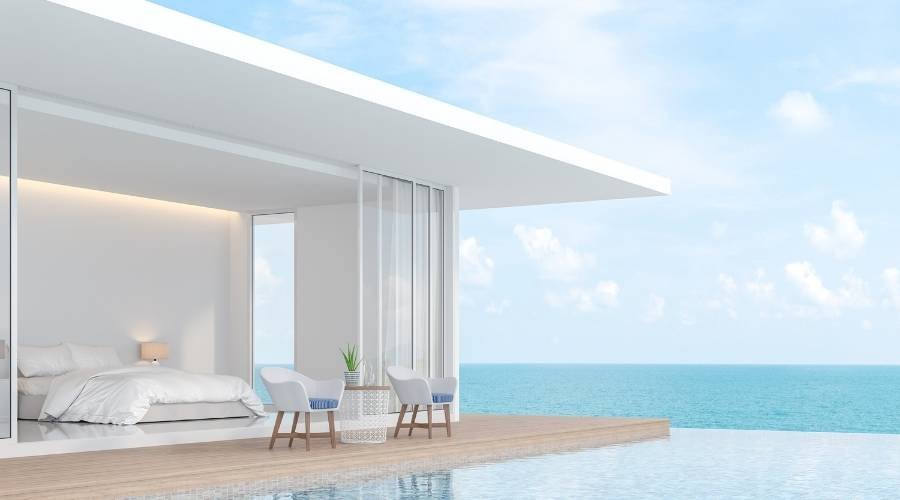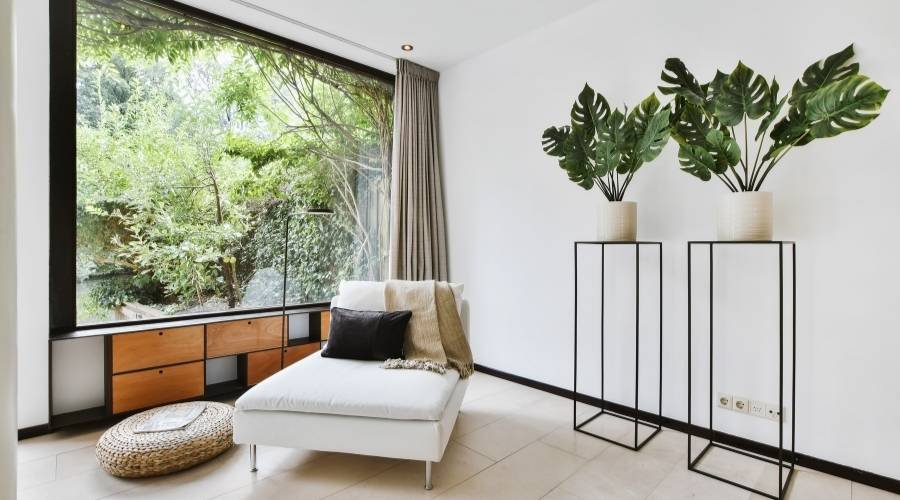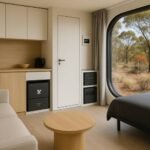Top Prefab Home Companies in Australia
1. Lunarnest – Redefining Prefab Living with Style and Sustainability
When it comes to prefab homes in Australia, Lunarnest is raising the bar. This innovative company combines elegant design, affordability, and eco-conscious construction to deliver next-generation modular homes that feel anything but prefab. Whether you’re after a compact city dwelling or a spacious family retreat, Lunarnest offers customizable floor plans, high-end finishes, and industry-leading build times.
What sets Lunarnest apart? Their homes are built in precision-controlled environments, slashing construction waste and ensuring superior quality every step of the way. They also prioritize sustainable materials, energy-efficient systems, and clever use of space, making their homes ideal for modern Australians who want to tread lightly on the planet without compromising comfort or style.
Key Highlights:
-
Fast build time: Move-in ready in as little as 12–16 weeks
-
Modern designs with flexible floor plans
-
Sustainable materials and energy-saving features
-
Competitive pricing from $150K to $450K
-
Fully Australian-made
With a rapidly growing portfolio and a reputation for excellence, Lunarnest is the go-to brand for those seeking stylish, affordable, and sustainable prefab homes.

The World of Prefab Homes
Exploring Prefab Homes
There’s a whole new thing happening in housing with prefab homes making waves in Australia. Think home kits that get delivered like oversized IKEA furniture, ready to assemble. Prefab homes are created off-site in a factory, then whisked away to where you plan on living your best life. This magical process cuts down on building time and boosts construction quality. It’s the perfect choice for families, singles, or even entrepreneurs who want stylish and cozy spaces without burning a hole in their wallet.
Why are these homes a wallet-friendly option? Well, here’s the scoop: prefab homes often end up 10% to 25% cheaper than those old-school brick and mortar setups. How so? You get steady labour costs, less waste, and fewer hours on the clock when the heavy lifting’s done factory-style. So, for those on a budget hunt for eco-friendly housing, prefab homes are like hitting the jackpot.
Want to see the difference in dollars? Check this out:
| Home Type | Average Cost (AUD) |
|---|---|
| Old School Home | $350k – $600k |
| Groovy Prefab Home | $250k – $450k |
Benefits of Prefab Living
Shacking up in a prefab comes with perks that we’re totally on board with. They’re all about squeezing efficiency out of every nail, reducing waste, and showing Mother Nature some love. With energy-efficient designs that keep heating and cooling prices from sending you into a tailspin, these houses are tightly insulated than your uncle’s belt after Thanksgiving dinner. Many even use eco-friendly stuff in the build, so you’re doing your part for the planet.
And talk about less mess! Prefab homes keep things tidy on-site, which is great for folks in the city. With clever use of space and resources, they make for swanky-yet-cozy homes that have families saying, “Sign us up.”
Even the big guys see the light: The NSW Government threw $10 million at modular social housing solutions, a nod to how prefab is changing the housing game.
So, as prefab homes take root in Australia, it’s all about living smart, sustainable, and within reach. If you’re on the lookout for the nitty-gritty on prefab modular homes in Australia, we’ve got the lowdown to help you find your dream space without breaking a sweat.
Costs of Prefab Homes
Alright, so you’re thinking about going prefab for your new home in Australia. Smart move! Let’s chat about what kind of cash you’ll need and what’s going to affect that price tag.
Average Cost
When it comes to your average prefabs, you’re looking at anywhere from $2,500 to $3,000 per square meter. A simple kit home—nothing too fancy—kicks off at about $100,000. As you start adding to that basic shell, though, those numbers can add up fast. Check out the breakdown below:
| Home Type | Minimum Cost | Average Size (sqm) | Price per sqm |
|---|---|---|---|
| Small Basic Build | $100,000+ | 40 – 60 | $2,500 – $3,000 |
| Medium Build | $150,000+ | 60 – 100 | $2,500 – $3,000 |
| Large Custom Build | $300,000+ | 100+ | $2,500 – $3,000 |
As you can see, prefabs can save you some dough compared to the traditional build, especially when the bills roll in slower.
Factors Affecting Price
A bunch of things can hike up the final bill on your prefab adventure:
- Size: Bigger equals more stuff and more work, which means a bigger bill.
- Inclusions: Want the top-notch finishes or some custom design work? Expect your costs to grow.
- Location: Where you plop that prefab can tweak the price—city centre or middle of nowhere, it all matters.
- Upgrades: If you lean towards high-end materials or energy-saving gadgets, expect to shell out more.
- Labour Costs: Factories churn these out fast, trimming down your labour bill by around 10% to 25% less than traditional home-building methods, thanks to more efficient processes and less waste.
Keeping all this in mind helps when picking out that compact cosy corner in Australia or something extra spacious. The beauty of prefabs? They’re quick off the mark—move-in ready in 3-4 months, beating the 6-12 months traditional homes demand. For more on what you’re looking at spending, pop over to prefab homes Australia cost.
By getting what drives these costs, you can better steer your prefab plans and land just what you’re after without going broke. If you’re hunting for some ideas, swing by and peep best prefab homes Australia—we’ve got some beauties lined up for you!
Building Process of Prefab Homes
Setting out on the adventure of snagging one of the affordable prefab homes in Australia means navigating a smooth building process. This neat little ride includes design magic, a construction timeline even your impatient uncle would approve of, and ironclad quality control. Let’s dive a little deeper into what’s what.
Design and Customization
The cool thing about prefab homes? Endless design possibilities. We can tweak our home to fit our unique tastes—whether it’s a cozy snuggle-sized pad or something roomier for the clan. The flexibility of these modular homes is pretty epic. They’re built piece by piece inside a factory, guaranteeing top-notch quality and speed. Rain, hail, or shine, these homes don’t bat an eyelid. If smaller digs are your vibe, check out our small prefab homes in Australia.
| What You Can Change | What It Means |
|---|---|
| Layout Options | Pick from a range of floor plans that work for us |
| Material Choices | Go green or keep it classic with your material picks |
| Extra Features | Think decks, porches, or extra rooms for more space |
Construction Timeline
Got no time to twiddle your thumbs? Prefab homes have got your back with a super speedy timeline compared to regular abodes. We’re talking about a build that’s generally wrapped up in just 20 weeks. As soon as construction kicks off, it’ll be up and standing on your site in just a day. This breezy timeline is perfect if you’re in a rush to settle in.
| Stage | How Long Does It Take |
|---|---|
| Nailing Designs | 2-4 weeks |
| Factory Action | 12-16 weeks |
| On-Site Magic | 1 day |
This quick pace doesn’t just mean we get to put our feet up sooner, but also cuts down those pesky construction bills.
Quality Control
Quality is king, right? Well, prefab homes are big on that. Built in Australia, these homes go through a thorough quality check. Every section gets a once-over during and after assembly, making sure everything hits the sweet spot. Plus, inspections keep going during on-site setup, so everything’s A-okay.
Since it’s all done in a factory, these homes are built to face different Aussie climates without flinching, whether that’s the sun, sand, or sea. So not only do they look good, but they’ll also stand the test of time.
By getting the hang of the building process, we can see how cheap prefab homes in Australia offer flexibility and savings compared to old-school builds. Plus, this process puts us in the driver’s seat to create a home that fits us like a glove, quality intact. Curious minds wanting more housing options should swing by our piece on the best prefab homes in Australia for extra inspiration.

Sustainable Prefab Homes
With everyone’s focus set on eco-friendly living and ditching that hefty carbon footprint, affordable prefab homes in Australia are a great shout for those of us who want comfy digs that don’t leave Mother Earth in tears. Let’s chat about what makes these homes kind to the planet.
Environmental Perks
Prefab homes are champs at keeping waste and nature in check. The prefab method is a bit like having a well-oiled recycling machine. It uses stuff smartly, cuts down on leftovers, and keeps nature happy during and after the build.
| Environmental Perk | Ordinary Homes | Prefab Homes |
|---|---|---|
| Waste Pile-Up | Way Too Much | Nicely Trimmed |
| Earth-Messing | Plenty | Barely Any |
| Power Use | Through The Roof | Nicely Cut |
Power Savers
Today’s prefab homes are like ninjas when it comes to saving power. They’re built using smart tricks to keep all the drafts out, so we’re not freezing in winter or melting in summer—our bills say thanks for that too.
They tend to be straight-A students when sized up against old-school homes for energy use. Toss in some solar panels and it’s like cheering for the environment while pocketing the savings.
Recycling Heroics
Prefab construction is like a recycling party. It makes the most out of materials during production, which means less rubbish. It’s all about reusing, recycling, and giving materials a second chance at life—talk about sustainable building at its best.
Loads of prefab builders also get the gold star for using recyclable bits and bobs. Makes them extra tempting for anyone looking to keep things green. Got the itch to find out more? Check out our resources on small prefab homes in Australia and prefab modular homes in Australia. They’re jam-packed with ideas for living sustainably through these snazzy homes.
Modular Homes vs. Container Homes
So we’re checking out our choices for prefab homes down under, aren’t we? We’ve got modular homes and container homes going head-to-head. Each has a charm of its own, from how they’re built to what they cost and how you can jazz them up to fit your style.
Construction Methods
Modular homes are like Lego blocks—crafted piece by piece in a factory. This means top-notch quality, and you won’t be biting your nails over rain delays. Once they’re done cooking in the factory, they hit the road to your piece of paradise for assembly. It’s like ordering fast food but for houses.
Now, container homes are the cool kids on the block. Built from old shipping containers, they weather life’s storms like champs. Equipped with all must-haves like insulation, windows, and plumbing, these homes are tough cookies, ready for whatever the Aussie climate throws at them.
| Construction Type | Method Details |
|---|---|
| Modular Homes | Built in pieces in a factory, then put together on-site. |
| Container Homes | Converted metal containers turned into cozy dwellings. |
Cost Comparison
Let’s chat money—wallet-friendly money! Both home types are easier on the budget than your classic go-to. Modular homes come together quickly and don’t break the bank. Meanwhile, container homes can be kind to your funds, too, but what you spend depends on the bling you add to them. Check it out:
| Home Type | Average Cost Range (AUD) |
|---|---|
| Modular Homes | $150,000 – $400,000 |
| Container Homes | $100,000 – $300,000 |
If you’re hungry for more numbers and nitty-gritty details, jump over to our page on prefab homes Australia cost.
Customization Options
Now, let’s yak about making the house a home. Modular homes are the kings of custom. They’re like a blank canvas where you choose the layout and pick your colours, finishes, and room sizes. It’s like being your architect without breaking a sweat.
Container homes, while snazzy in their own right, might cramp your design endeavors a bit because of their solid frame. You’ve got some room for tweaks, but it’s not an all-you-can-design buffet. Yet, hey, if you like the industrial, out-of-the-box look, they might just be your style.
So, both options save us some bucks and give us a place to call our own. Just weigh up how they’re put together, what they’re going to set you back, and how much tweaking you like to do. For more gizmos and gadgets, peek into our pages on small prefab homes Australia and best prefab homes Australia.
Future of Prefab Homes
Australia’s journey towards affordable prefab homes is gearing up, with several exciting efforts leading the charge. By hitching our wagon to government plans, public awareness efforts, and supportive rules, we’re setting the stage for housing that’s both inviting and budget-friendly.
Government Initiatives
The Australian government’s got its finger on the pulse and understands the rush to make housing affordable. They’re targeting a big-time project to churn out 1.2 million well-placed homes in five years, all in a bid to squash the housing headache. There’s a mad scramble for affordable pads, so boosting the supply is the name of the game.
In another move, the NSW Government chucked in a hefty $10 million to give modular social housing a whirl. This cash drop shows they’re betting on snazzy prefab methods to roll out easy-on-the-wallet homes that tick all the boxes for community needs.
| Initiative | Description | Investment |
|---|---|---|
| National Cabinet Target | Churning out 1.2 mil homes in 5 years | – |
| NSW Government Trial | Dipping toes in modular social housing | $10 million |
Public Awareness Campaigns
To give prefab housing the spotlight it needs and shake off old stereotypes, public awareness is a must. These efforts are all about parading successful prefab projects, highlighting design flexibility that can roll with life’s punches. The perks – think less waste, clever logistics, and lower labour costs – should steal the limelight to rally up more cheerleaders for the cause.
Taking a leaf out of Sweden and Japan’s book could be a masterstroke. They’ve nailed integrating prefab housing into their city plans, proving it’s a go-to fix for snug living arrangements.
Policy Frameworks
A policy nudge in the right direction is key for warming folks up to prefab homes. Australia’s dealt with a few bumps in the road, from red tape to old-school thinking, but solid policy can smooth out these kinks. By setting up rules that boost innovation and marry prefab solutions with the bigger housing picture, we can craft a scene where affordable prefab homes thrive.
Policies that call the shots on environmental care, safety, and design adaptability will help build trust in the prefab game. Arranging frameworks to make the prefab home process a breeze will tempt more builders and investors to hop on board. Want to dive deeper? Check out our pieces on small prefab homes in Australia and the best prefab homes in Australia.
With these moves in play, we’re looking at a not-so-distant future where affordable prefab homes are not just on the table but the go-to pick for folks hunting for cozy, budget-conscious digs.






